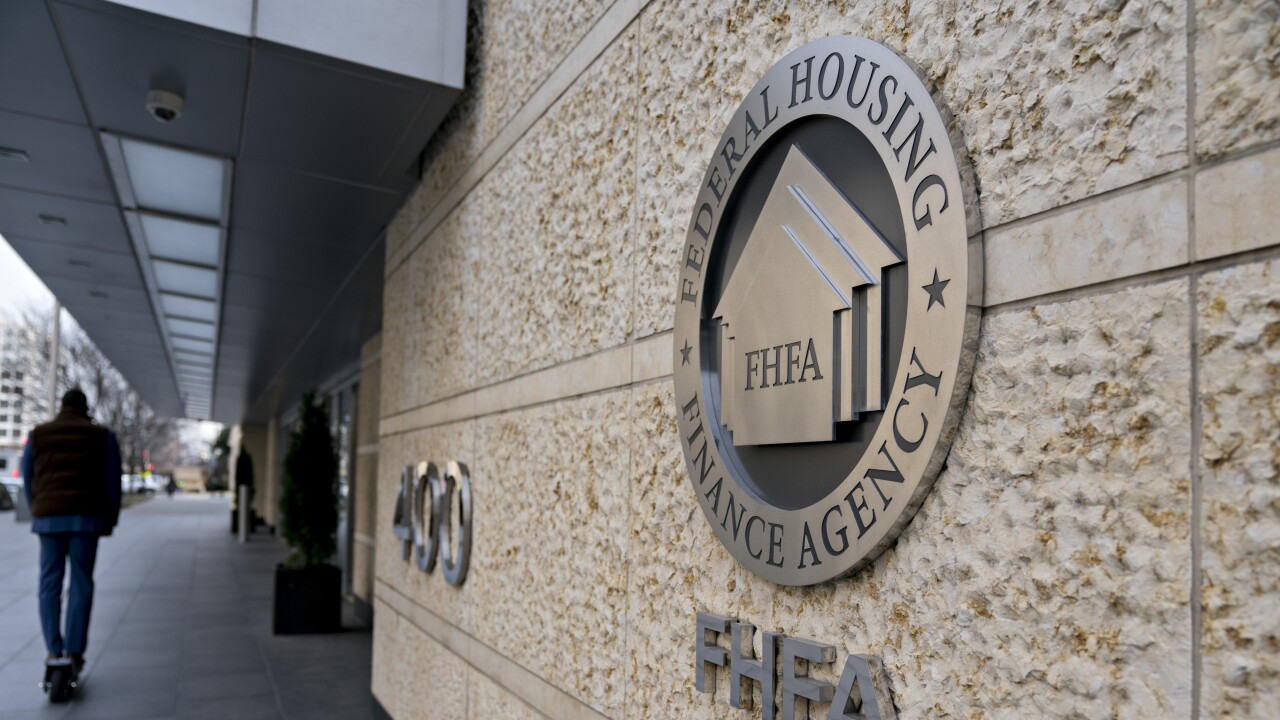Fannie Mae on Tuesday reported new housing-related challenges roughly halved its net income in the third quarter.
The government-sponsored enterprise reported earnings of $2.4 billion compared to $4.65 billion in
The biggest driver of Fannie Mae's decreased earnings was a large jump in its credit-related expense line item, reflecting declines in real and projected home prices. This number surged to $2.51 billion, several times the second quarter's amount of $251 million. A year earlier, Fannie reported $868 million in credit-related income.
"We are intently focused on our role as the liquidity provider through all market conditions, including today's. In order to fulfill that role, responsibly, for the renters and borrowers reserve and for the broader housing finance, we need to successfully manage risk," said David Benson, Fannie's president and interim CEO, during the government-sponsored enterprise's earnings call. Benson will no longer have the latter title after
While credit risk has been kept under control to date, Fannie's leaders said Tuesday that they are concerned it could be on the verge of an uptick.
Serious delinquency rates continued to drop through the third quarter, falling to 0.69% from 0.81% the previous fiscal period and 1.62% a year earlier.
However, historical loss experience suggests that falling home prices and recent storm damage to properties could hurt loan performance, said Chryssa Halley, Fannie's executive vice president and chief financial officer.
"We expect that some borrowers affected by the hurricanes will become seriously delinquent on their loans," Halley said. "It is also possible that the unpaid principal balance of our single family loans in forbearance may increase as a result of borrowers affected by the hurricanes requesting forbearance."
Despite several challenges during the quarter, the government-sponsored enterprise was able to boost net worth to $58.8 billion, compared to $56.4 billion the previous quarter and $42.2 billion in 3Q21.
However, it still has a ways to go before it's considered fully capitalized. As of Sept. 30, Fannie had a $258 billion shortfall to the amount needed in order to be fully capitalized, a $4 billion improvement from June 30, said Halley.
"This improvement was primarily the result of an increase in our retained earnings and lower capital requirements," she said.
Contributing to lower capital requirements was the use of single-family credit risk transfers, said Halley. Fannie entered six of these during the quarter, referencing loan pools with a unpaid principal balance of $134 billion at the time of the transactions
Fannie earned $7.2 billion of net revenues in the third quarter, down compared to the $7.9 billion of net revenues in the second, but up compared to $7.08 billion a year earlier.
Net interest income for the third quarter was $7.12 billion, a number that was slightly down from $7.8 billion during the previous fiscal period but up from $6.97 billion a year ago. Reduced amortization as fewer loans refinanced drove this number, Halley said.
Single-family loan acquisitions during the quarter were primarily (79%) purchases, bringing the share of mortgages in this category to its highest point in at least two decades, Benson said. Overall, acquisitions in this category fell to $15.9 billion from $18.7 billion the prior quarter, and $115.4 billion a year earlier.
Multifamily acquisitions, which have an annual cap, had around $27 billion of authorization remaining at the end of the third quarter.





